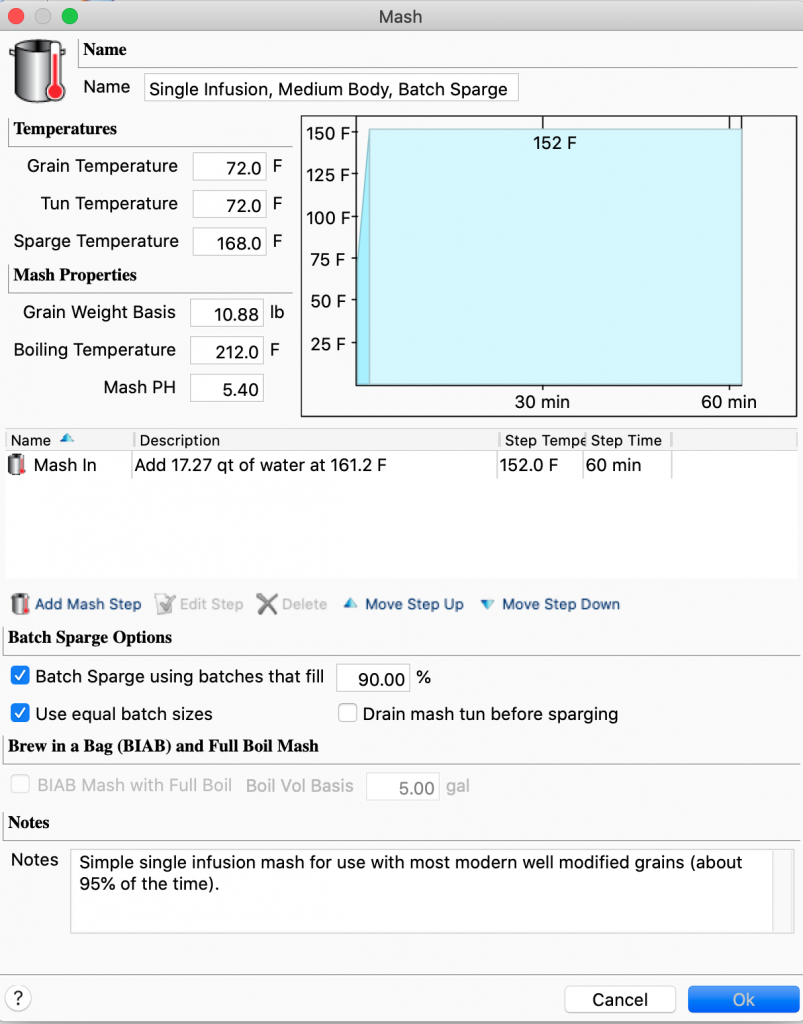

As a result, the run-off amount for each sparge gets smaller as the number of sparges is increased. Keep in mind that in all these cases the pre-boil volume is kept the same.

But as the number of sparges is increased the increase in efficiency is diminishing. Subsequent sparging batches can not deliver all the extract into the boil kettle, they can only capture a part of the extract that was left behind. The more wort is held back by the grain and the lauter tun's dead space, the more extract will remain in the grains after running of. The size of the grist and/or its absorption ratio have a significant effect on the batch sparging lauter efficiency.

Though it was only shown for the one-sparge case that the run-offs should be of equal size, further experiments will assume that all run-offs are of equal size even for the 2 and 3 sparge cases.

The efficiency curve is shifted towards lower efficiency as the amount of grain increases (note that the pre boil volume is held constant and that all the curves are for single batch sparging). This is the efficiency difference between a no-sparge and a single batch sparge. Towards the edges, where one of the run-offs comes close to or is the total boil volume, the efficiency drops by almost 10%. The experiment is repeated for 3 grist weights (10 lb, 15 lb and 20 lb).Īn efficiency optimum exists when the 1st and 2nd run-off are both half the pre-boil volume, but it is also apparent that even slightly uneven run-offs are very close to the optimum. In the E one-sparge formula this will affect V LT-1 and V LT-2. To make this experiment, batch sparging with 2 run-offs is used and the parameter that is varied is the ratio between the first run-off volume (V r-1) and the pre-boil volume (V b). Obviously this only applies to batch sparging with 1 or more sparges as there is only one run-off in no-batch sparging. The first parameter that should be examined is the effect of the relative run-off sizes. It is the sum of the run-off volumes: V b = V r-1 + V r-2. V b - the preboil volume of wort collected.It is the difference between the volume in the lauter tun and the volume kept in the lauter tun: V r-n = V LT-n - V DG V r-n - run-off volume for each run-off.
#BEERSMITH BATCH SPARGE PLUS#


 0 kommentar(er)
0 kommentar(er)
